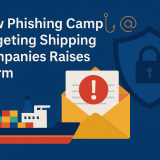Smart Tips for Better Maritime Security
August 13, 2020 MARITIME CYBER SECURITY
What is Maritime Security?
Maritime cybersecurity is essentially the collection of policies, tools, habits, security safeguards, and guidelines that maritime groups implement in order to protect their organizations, vessels, and associated networks.
According to the International Maritime Organization (IMO), “Maritime cyber risk refers to a measure of the extent to which a technology asset could be threatened by a potential circumstance or event, which may result in shipping-related operational, safety or security failures as a consequence of information or systems being corrupted, lost or compromised.”
Over the years, maritime technology has improved rather significantly. Yet over that same time, many organizations have continued to leverage legacy technologies that were never built to be connected to the internet. This has exposed vessels and maritime networks to increased risk.
“There was a time when connectivity on a vessel was minimal, and ship control engineers addressed security issues with air gapping to physically isolate a secure network from unsecured networks. By definition, an air-gapped system is neither connected to the Internet nor any other system,” Mission Secure explains. “But now, using something as simple as a USB flash drive or unsecured Wi-Fi connection, a malicious hacker or even an inexperienced insider could infiltrate and infect critical systems. This development is especially concerning given the connectivity of modern maritime vessels.
4 Tips for Better Maritime Security
In 2020, the need for better maritime security is clear and convincing. Here are some tips organizations within the industry can use to stay safe:
1. Emphasize Physical Security
Believe it or not, physical security comes first. Many cyberattacks are made possible by giving physical access to people who have no business interacting with certain parts of the network or system.
Good physical security calls for vigilance, continuous monitoring, and regular drills. These drills will help you identify weaknesses that may not be obvious otherwise. Try surveying your team, analyzing crew performance, and studying all duties of the ship security officer so that you can identify and phase out any loopholes that represent a vulnerability.
2. Manage User Privileges
All users should be given the least amount of access they need to perform the duties that align with their job role. Be reasonable, but certainly don’t be liberal in how you hand out user privileges.
When granting high level system privileges, users should be carefully monitored and managed. In other words, access doesn’t mean the individual has free reign. Multi-layered safeguards are a must.
3. Invest in Malware Prevention
Malware can be referred to as any type of malicious content that’s intended to access, influence, and/or damage key systems of a computer or network. When deployed successfully, a piece of malware acts as a virus – seriously impacting all of the ship’s systems and services.
Maritime organizations must be serious about investing in and implementing the right anti-malware policies and solutions. And once implemented, they need to be rigorously monitored and updated to stay fully operational.
4. Develop a Robust Strategy
Mission Secure believes in a six-part cybersecurity risk management approach. While it’s a complex process with too many proprietary steps to outline here, it’s basically broken down like this:
- Identify threats. Make a thorough list of all internal and external cybersecurity threats to the ship.
- Identify vulnerabilities. Develop a comprehensive inventory of all onboard systems that have direct and indirect communication.
- Assess risk exposure. Analyze the risk exposure of internal threats, external threats, and all vulnerabilities. Determine the likelihood of being exposed in any of these ways.
- Develop protection and detection measures. The plan should include tactics for reducing the likelihood of being compromised, as well as the impact of certain vulnerabilities being exploited.
- Establish contingency plans. This plan should have a prioritized list of action steps to mitigate cyber risks as they’re detected.
- Respond and recover. Focus on recovering and strengthening cyber defenses so that similar future attacks don’t stand a chance of being successful.
A meticulous approach like this takes time to develop, but creates a strong defense that stands up in even the most hostile environments. A failure to invest in a 360-degree strategy like this could lead to serious compromises.
Safer Times Ahead
While the industry is moving fast to protect against cyber attacks, it’s going to take a while for all of the major maritime companies to coalesce around comprehensive cybersecurity strategies that stand up to the latest and most advanced threats. But once the wrinkles get ironed out, it’ll be smooth sailing into the future.
Source: smartdatacollective





